

A group requires permissions to list an Amazon S3 bucket and delete objects from that bucket. An administrator has created the following IAM policy to provide access to the bucket and applied that policy to the group. The group is not able to delete objects in the bucket. The company follows least-privilege access rules.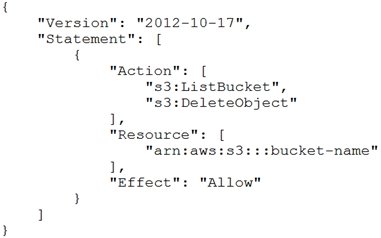
Which statement should a solutions architect add to the policy to correct bucket access?
A.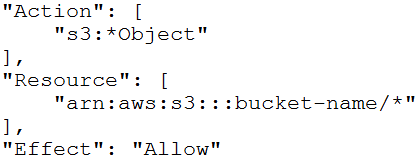
B.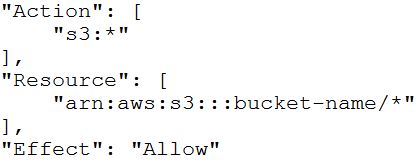
C.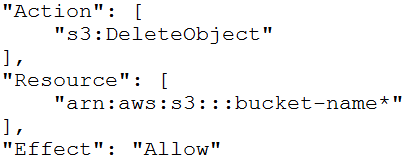
D.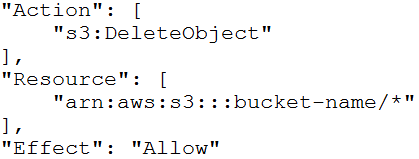
dmscountera
Highly Voted 3 years, 11 months agomanan728
3 years, 9 months agoleliodesouza
Highly Voted 3 years, 10 months agofro13
Most Recent 2 years, 1 month agoMMsdk
3 years agoGomer
3 years, 8 months agoGomer
3 years, 8 months agoKyleZheng
3 years, 9 months agoSharan_25_v
3 years, 9 months agovirendrapsingh
3 years, 9 months agoakss009
3 years, 9 months agoKalyankr
3 years, 9 months agoJohn129087
3 years, 9 months agosreeks2021
3 years, 10 months agoKenzo
3 years, 10 months agoPriyapol26
3 years, 10 months agoJunyafu
3 years, 10 months agohassanbsee2071
3 years, 10 months agoAOA
3 years, 10 months agotinyshare
3 years, 10 months agominiscraper
3 years, 10 months agoGomer
3 years, 8 months agoGomer
3 years, 8 months agoKK_uniq
3 years, 10 months agoansh18061986
3 years, 10 months agotheEngineer
3 years, 10 months agosyu31svc
3 years, 10 months ago